Slotted screwdrivers: description, varieties and subtleties of application
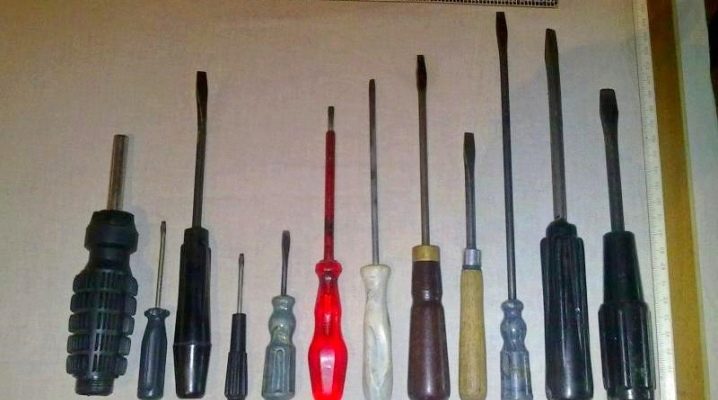
Slotted screwdrivers are an indispensable tool both in the arsenal of professional craftsmen and for home use. We will tell you in detail about the varieties and intricacies of using such screwdrivers in our article.
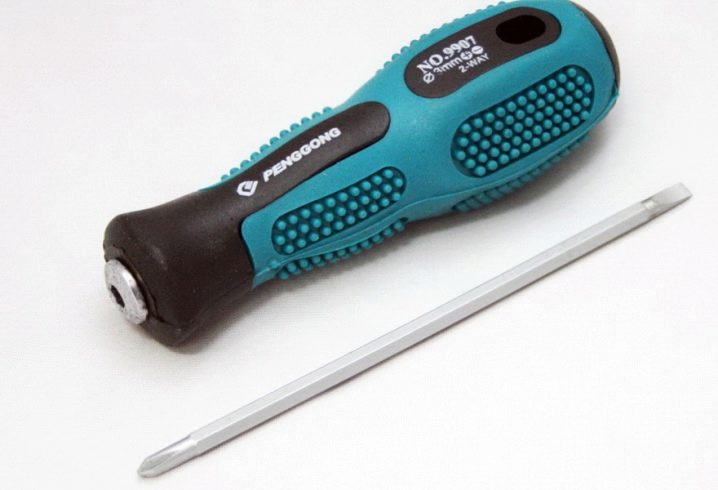
What it is?
A device for unscrewing / screwing in fasteners with a straight slot (slotted or straight slot, in the conversation is called flat, straight or linear) is called a slotted screwdriver. The working tip of the tool is a wedge-shaped plate. This type of screwdriver is rightfully considered a classic. With its help, you can unscrew / tighten various screws, self-tapping screws, screws and other fasteners containing space for a flat slot.
Such a tool can be used both for direct work (screwing / unscrewing) parts, and for supporting any structural elements. Due to its design, it can be used for setting or adjusting a wide range of electrical devices.



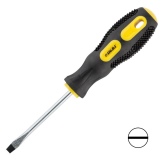
Marking
All slotted screwdrivers are marked with letters SL (from the English Slot - slot) and numbers indicating the width and sometimes the thickness of the slot in mm.
According to GOST 24437-93, screwdrivers for fitting and assembly work can have the following characteristics:
Screwdriver designation | Nominal thread diameter of a screw, screw, mm | Working surface size, mm | Screwdriver length, mm | Handle length, mm | Handle diameter, mm | Rod diameter, mm |
7810-0963 | 1.4-2.0 | 0.25 × 0.8 | 85 | 45 | 12 | 0.8 |
7810-0964 | 2.5; 3.0 | 0.4 × 1.6 | 1.6 | |||
7810-0965 | 3.5 | 0.5 × 2.3 | 105 | 55 | 15 | 2.3 |
7810-0966 | 4.0 | 0.6 × 2.8 | 155 | 80 | 18 | 2.8 |
7810-0967 | 5.0 | 0.8 × 3.5 | 180 | 3.5 | ||
7810-0968 | 6.0 | 1.0 × 4.5 | 215 | 90 | 22 | 4.5 |
7810-0969 | 8.0 | 1.2 × 6.0 | 250 | 100 | 25 | 6.0 |
7810-0971 | 10.0 | 1.6 × 8.0 | 8.0 | |||
7810-0972 | 12.0; 14.0 | 2.0 × 9.0 | 300 | 100 | 25 | 9.0 |
7810-0973 | 16.0 | 2.5 × 11.0 | 11.0 | |||
7810-0974 | 18.0; 20.0 | 3.0 × 11.0 | 350 | 100 | 25 | 13.0 |
More detailed information can be found in GOSTs. Considering that most modern screwdrivers continue to be manufactured according to this standard. European manufacturers use their ISO quality standard labeling.
Views
There are quite a few types of slotted screwdrivers.
- Dielectric screwdrivers - This is a device consisting of a metal base with a tip and a plastic or often rubber handle, which, due to the insulation, does not allow current to pass through. Such screwdrivers are used mainly by electricians who need to work in conditions of a switched on network.


- Conventional screwdrivers with a reinforced steel handlewhich is covered with plastic. They cannot be used for work with the mains switched on (since they conduct current), but they have different lengths, rod thicknesses and can be used when working, for example, with metal or wood.

- Combination screwdriver Is a device with an indicator or dynamometer built into the device. Such an indicator signals the presence of current in the electrical network, therefore such screwdrivers can be used both for installation work and for repairing electrical networks. The dynamometer, on the other hand, makes it possible to adjust the pressing force to a twisted threaded connection, which is often necessary, for example, when assembling fragile materials.
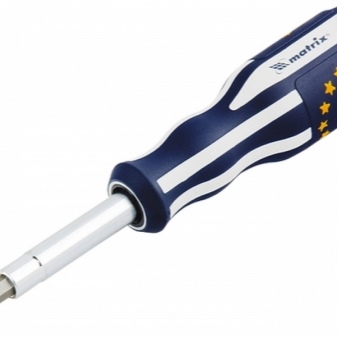

- Screwdriver with different attachments. Such a screwdriver allows you to solve many problems, its handle is a kind of pencil case, in which various tips are located, a set of more than 10 pieces. A small disadvantage of such a device is the size of the handle, so it is not always easy to use it, especially in a narrow space.
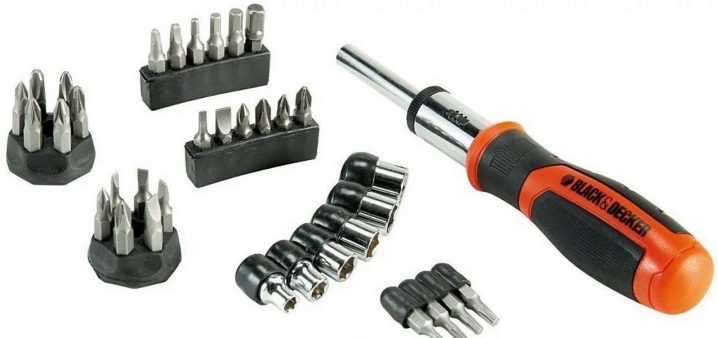
- Impact or power screwdriver used for loosening tightly tightened threaded connections. Its principle of operation is that after hitting it with a hammer, the impact energy is directed to unscrew the screw.
Basically, they are all quite large, as they are used to work with large details.

- Probe screwdrivers - with a transparent handle, in which there is a LED or a lamp, at the moment the tip touches the live wire, the lamp lights up. Such a screwdriver makes it possible to determine accurately whether there is voltage in the network. There are also screwdrivers available to help determine open circuit or DC contrast.

- Precision screwdrivers have a tip made for the most accurate ratio to the screw head of small dimensions. They are mainly used for collecting / disassembling small devices: mobile phones, watches, tablets and similar devices.
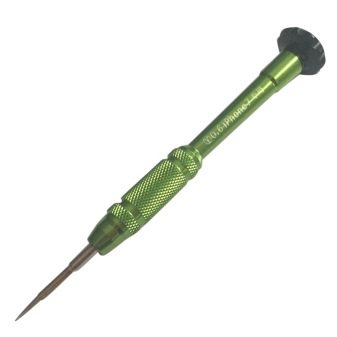

- Special screwdrivers - used for work with self-tapping screws or screws with special requirements. For example: protection against twisting, high torque when tightening a small head.
Used in mechanical engineering or electronic products.

- Flexible Shank Screwdrivers, for work in hard-to-reach places.


But there is also a difference in the types of splines:
- straight slot is one of the most common options;
- cross-shaped slot with a hole in the center of the working part for guides;
- slot with a combination of straight and cross spline parts;
- one of the variants of the cross recess is a model that combines a cross and a square section;
- model with a cross-shaped working part and 4 beams;
- square slot option;
- square slot with a hole in the center of the guide;

- slot "star";
- star version, but using a pin in the center;
- the same "star", but with shorter and less sharp rays;
- five-pointed star with a hole;
- hex slot or imbus wrench;
- the same hex wrench with a hole for the guide;
- screwdriver with a three-winged slot, a rare option;
- Asymmetric cross-type slot, which has a stronger tightening than other splines;

- a slot similar to a two-pronged fork;
- eight-pointed star with a hole in the middle, a rare specimen;
- pentagonal slot, a rare alternative to hexagonal;
- the twelve-pointed star was used on some Volkswagen vehicles;
- narrowly directed type of slot, used mainly in various models of American electrical engineering;
- triangular slot, used in toys, electrical appliances or household appliances.

Sizes of flat-head screwdrivers can be of the following sizes:
Width, mm | 2 | 2,5 | 3 | 3,5 | 4 | 4,5 | 5 | 5,5 | 6,0 | 6,5 | |||||||
Thickness, mm | 0,3 | 0,4 | 0,4 | 0,5 | 0,5 | 0,6 | 0,6 | 0,8 | 0,6 | 0,8 | 0,8 | 0,8 | 1 | 1 | 1,2 | 1 | 1,2 |
Width, mm | 7 | 8 | 9 | 10 | 12 | 13 | 14 | 16 | 18 | ||||
Thickness, mm | 1 | 1,2 | 1,2 | 1,6 | 1,4 | 1,6 | 1,6 | 2 | 1,5 | 2 | 2,5 | 2,5 | 3 |
How to choose?
Despite the fact that there are many types of screwdrivers, it is very easy to choose a screwdriver for the necessary work.
To begin with, it is worth deciding on the upcoming types of work.
- If there is a need for anti-vandal protection of fasteners, you should pay attention to screwdrivers of the "two-pin" type with a slot in the middle, this type of fastening will protect against unscrewing by other types of screwdrivers.
- For work with electricity, it is worth using a dielectric, terminal or indicator screwdriver.
- For work with large parts, fasteners or strongly twisted fasteners, it is worth taking a reinforced screwdriver, it has an increased torque due to hammer blows.
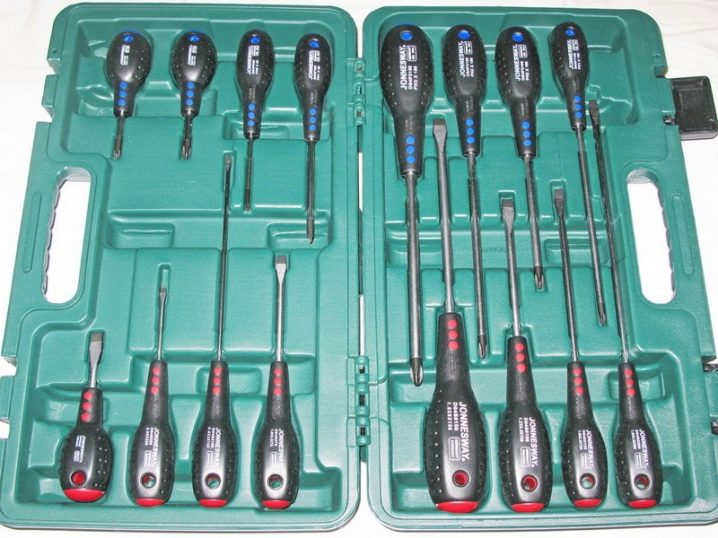
- In the case when it is necessary to perform a large number of work, it will facilitate the storage of the tool, you can look at the screwdriver sets, they usually include a set of socket bits, cue bits with flat slots, "asterisk" cues, Ph and PZ cross cuts, hexagonal cuts of various sizes. several pieces each. Such a set is more expensive, but due to its versatility, it justifies the money spent on it.
- When choosing a tool, you should pay attention to the quality of the materials from which it is made, the quality of the connection of the handle to the metal rod. Basically, the handles are made of plastic with rubber inserts, due to this, the hand will hold on to such a coating well and will not be able to slip out at the right time.

- The diameter of the handle should be chosen based on the work to be done: the larger the size of the parts with which to work, the wider the handle should be, as this affects the torque. Screwdrivers designed for small parts are equipped with a small handle to prevent damage or breakage of the slot / part.
For the tip of your screwdriver to last a long time, it is worth choosing those screwdrivers whose shaft and tip are made of high-alloy or chromium steels with vanadium content.
- Select the size of the screwdriver for the size of the fasteners or slightly larger (one of the most common sizes among screwdrivers, these are tools with a working slot width of 2 mm), since if the width of the tip is less than the size of the fastener, then it will spoil the slot of the screwed part and deteriorate itself.
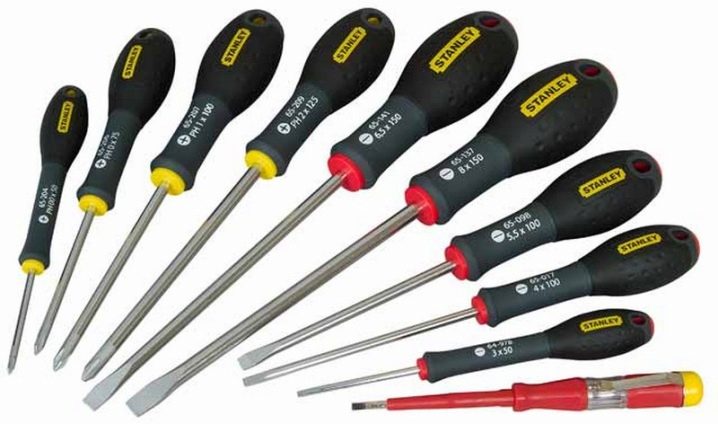
Subtleties of application
If the dimensions of the slot were correctly selected for the size of the parts, then the screwdriver will do everything by itself. With a flat-head screwdriver, you should not try to unscrew the fasteners with connectors for a Phillips screwdriver or an asterisk screwdriver, because it is not for nothing that there is a certain type of screwdriver for a certain type of fastener.
It is recommended to use a tool with a hexagonal tip for collecting / disassembling furniture. The tip should fit snugly in the head of the fastener.

If the fasteners are rusted, then it is worth using, for example, rust solvents, since if you try to unscrew a rusty bolt, screw and similar parts, you can "lick" the place under the screwdriver or damage it itself.
When working, the metal part of the tool should be located perpendicular to the mounting location. Try to avoid skewing the tool shaft in relation to the screw axis... Do not use a damaged or damaged tool.
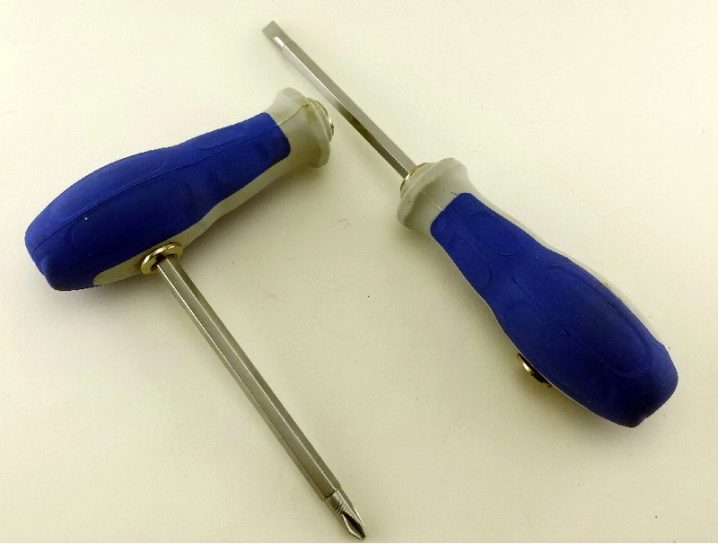
For work under voltage, use only dielectric screwdrivers, as there is a risk of electric shock when using other types of tools. Do not expose the tool to heat to avoid damaging the stem or melting the handle.
The main operating temperature range of such a tool is from -40 ° C to + 70 ° C.

More about screwdrivers - next video.













The comment was sent successfully.